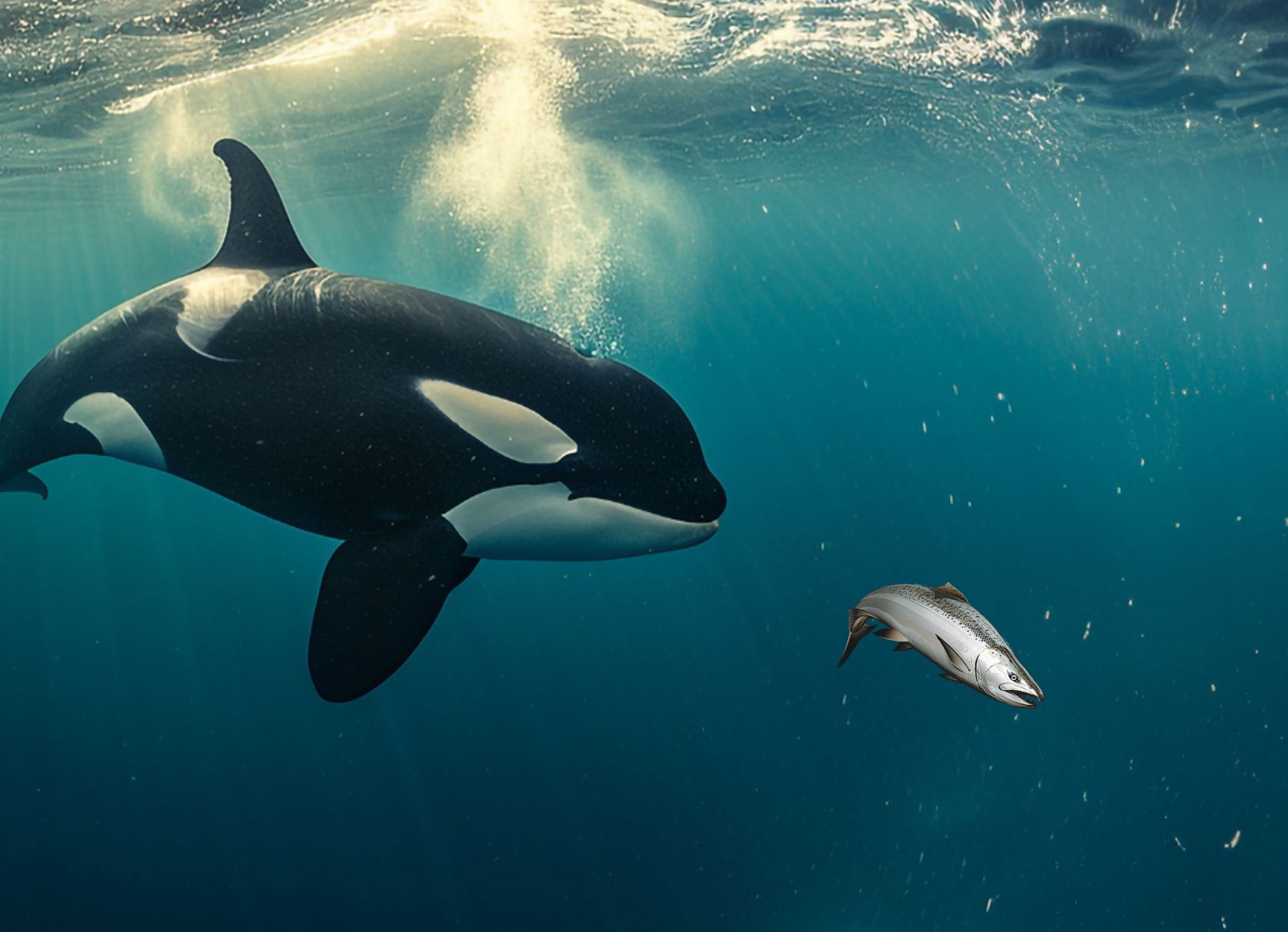
Cutting-edge technology provides unprecedented look into killer whale prey availability, challenging long-held beliefs
Differences in the availability of prey may explain the low numbers of southern resident killer whales and the increase in northern resident killer whales in British Columbia and Washing-ton State. However, in-situ data on the availability of their preferred prey (Chinook salmon, Oncorhynchus tshawytscha) in the core feeding areas used by these two populations of fish-eating killer whales have been lacking to test this hypothesis. We used multi-frequency echosounders (38, 70, 120, and 200 kHz) to estimate densities of adult Chinook (age-4+, > 81 cm) within 16 hot-spot feeding areas used by resident killer whales during summer 2020 in the Salish Sea and North Island Waters. We found Chinook were generally concentrated within 50 m from the bottom in the deep waters, and tended to be absent near the surface in the shallow waters (< 50 m). In general, the densities of Chinook we encountered were highest as the fish entered the Salish Sea (from Swiftsure Bank in the south) and Johnstone Strait (from Queen Charlotte Strait to the north)—and declined as fish migrated eastward along the shoreline of Vancouver Island. Median densities of Chinook for all sampled areas combined were 0.4 ind. per 1000 m2 in northern resident foraging areas, and 0.9 ind. per 1000 m2 in southern resident killer whale areas (p < 0.05, Mann–Whitney U test). Thus, Chinook salmon were twice as prevalent within the hot-spot feeding areas of southern versus north-ern resident killer whales. This implies that southern resident killer whales have greater access to Chinook salmon compared to northern residents during summer—and that any food shortage southern residents may be encountering is occurring at other times of year, or elsewhere in their range.
 Publication
Publication
2024 | ||||||||||||||
|

|

|
||||||||||||
Burak Saygili is a post-doctoral fellow at the Marine Mammal Research Unit at the University of British Columbia
